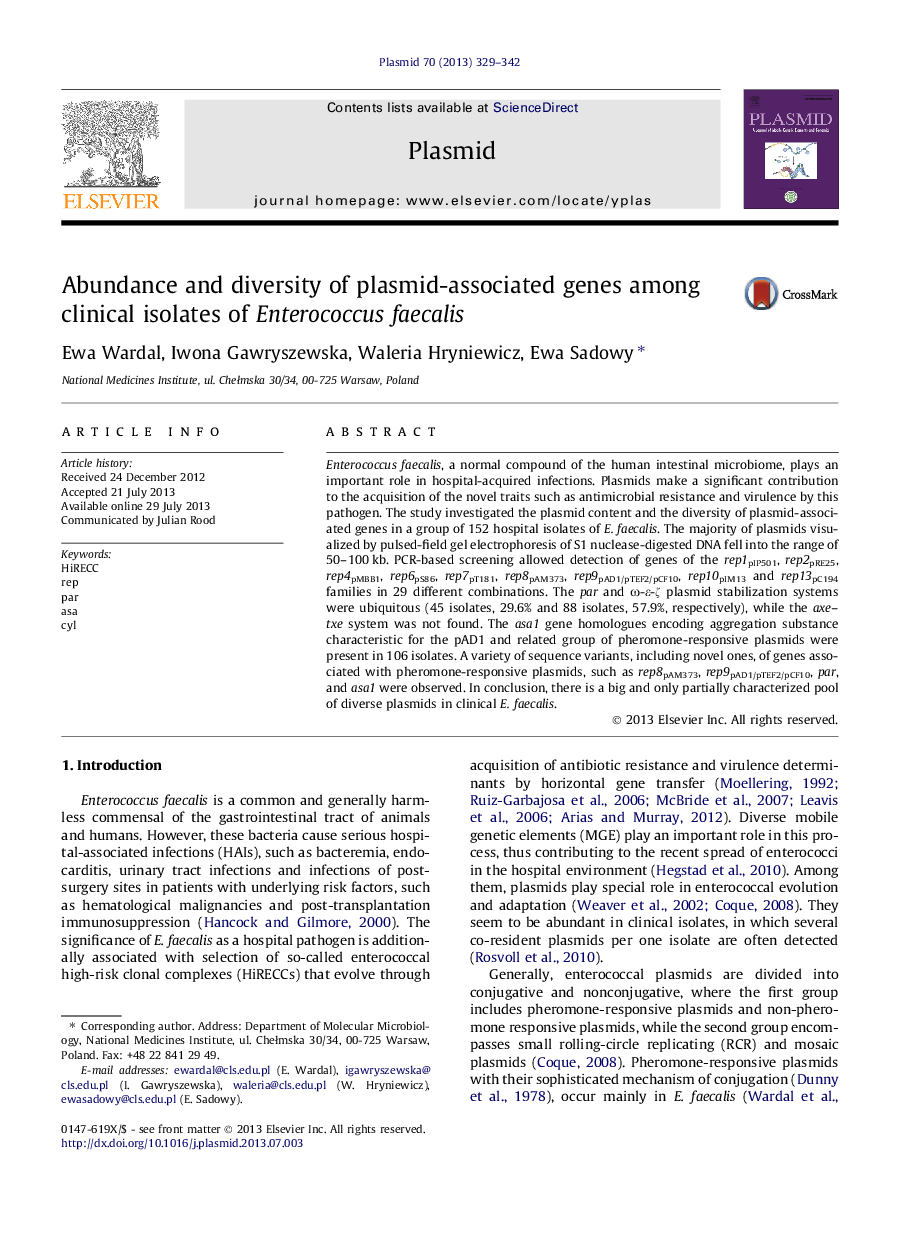| Article ID | Journal | Published Year | Pages | File Type |
|---|---|---|---|---|
| 2824117 | Plasmid | 2013 | 14 Pages |
•We examined 152 clonally and clinically diverse group of hospital isolates of E. faecalis.•There is a high content of various plasmid-associated genes in E. faecalis.•Differences in distribution of particular plasmid genes and their alleles exist between HIRECC and non-HIRECC isolates.•Pheromone plasmid-associated genes show a significant degree of variability.
Enterococcus faecalis, a normal compound of the human intestinal microbiome, plays an important role in hospital-acquired infections. Plasmids make a significant contribution to the acquisition of the novel traits such as antimicrobial resistance and virulence by this pathogen. The study investigated the plasmid content and the diversity of plasmid-associated genes in a group of 152 hospital isolates of E. faecalis. The majority of plasmids visualized by pulsed-field gel electrophoresis of S1 nuclease-digested DNA fell into the range of 50–100 kb. PCR-based screening allowed detection of genes of the rep1pIP501, rep2pRE25, rep4pMBB1, rep6pS86, rep7pT181, rep8pAM373, rep9pAD1/pTEF2/pCF10, rep10pIM13 and rep13pC194 families in 29 different combinations. The par and ω-ε-ζ plasmid stabilization systems were ubiquitous (45 isolates, 29.6% and 88 isolates, 57.9%, respectively), while the axe–txe system was not found. The asa1 gene homologues encoding aggregation substance characteristic for the pAD1 and related group of pheromone-responsive plasmids were present in 106 isolates. A variety of sequence variants, including novel ones, of genes associated with pheromone-responsive plasmids, such as rep8pAM373, rep9pAD1/pTEF2/pCF10, par, and asa1 were observed. In conclusion, there is a big and only partially characterized pool of diverse plasmids in clinical E. faecalis.
